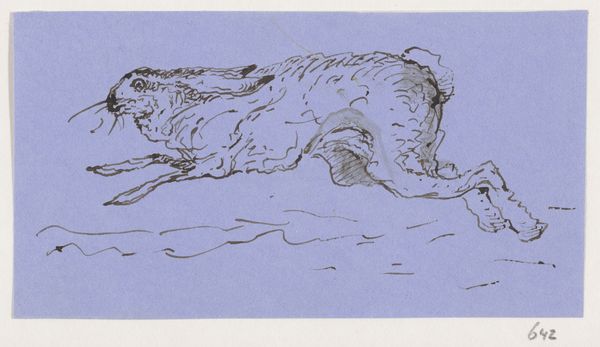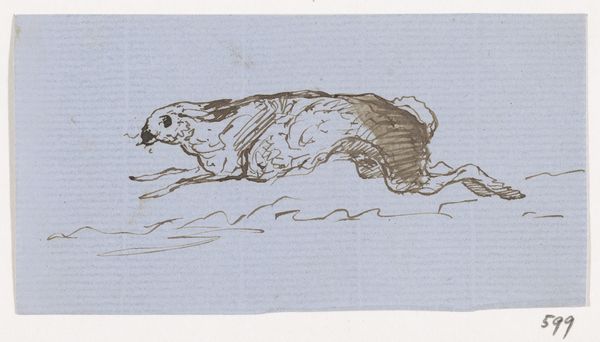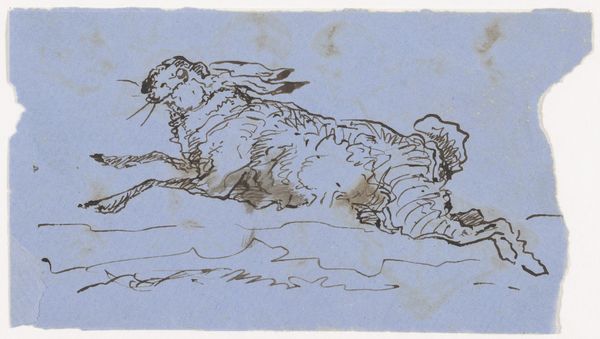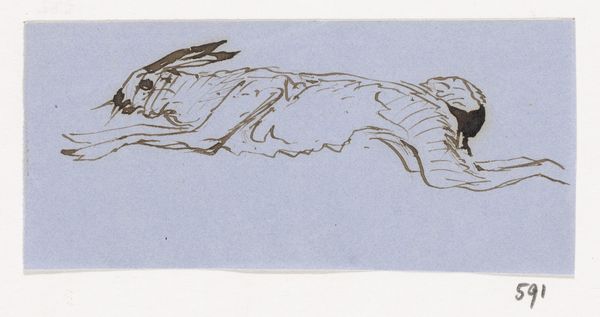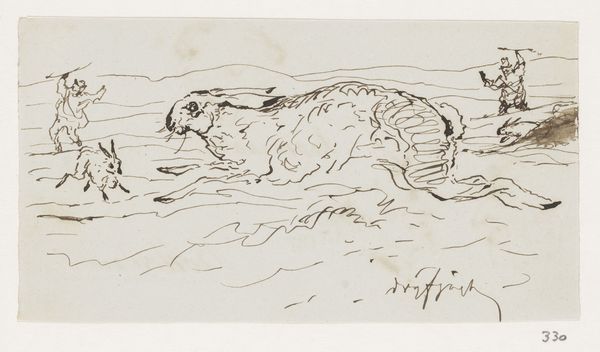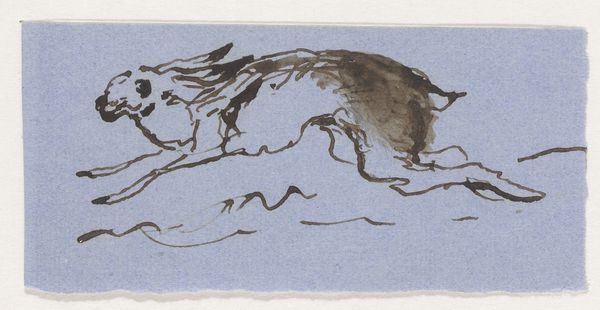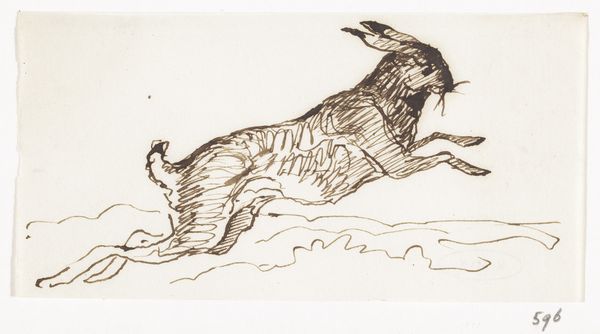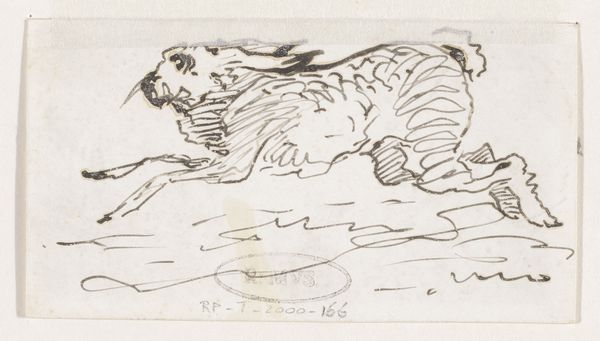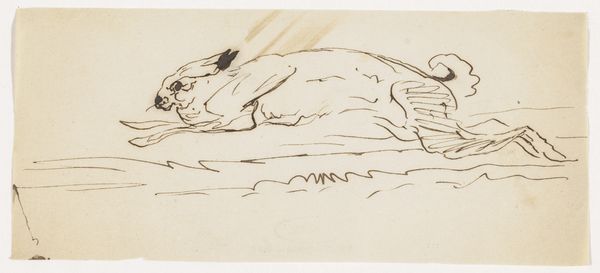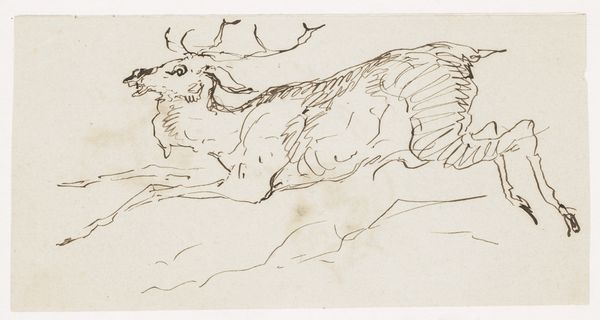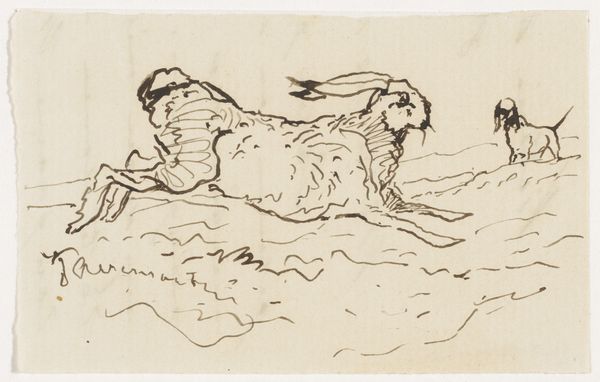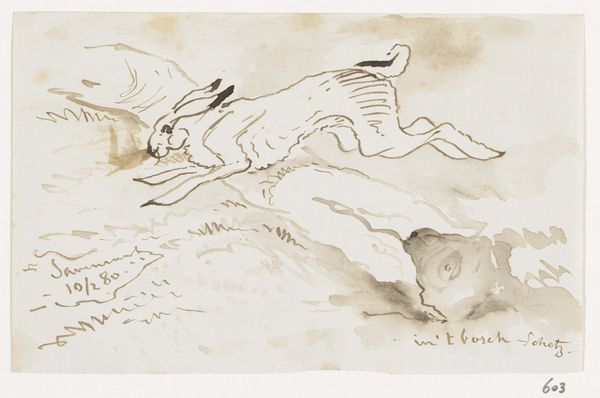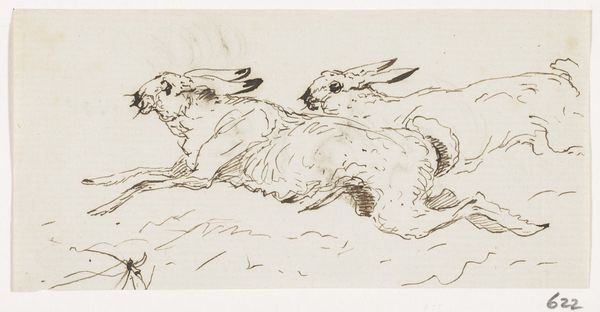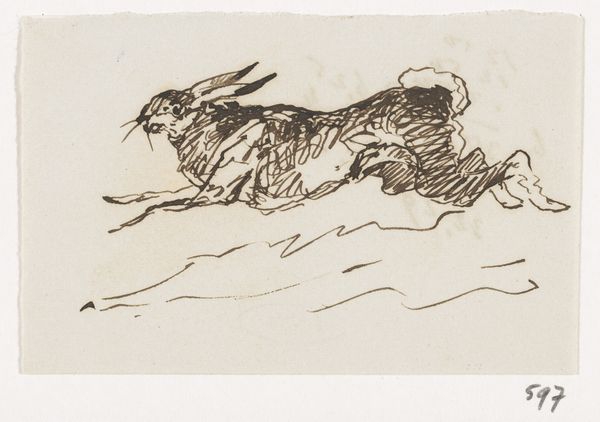
drawing, paper, ink, pencil
#
portrait
#
drawing
#
pen illustration
#
pen sketch
#
landscape
#
cartoon sketch
#
paper
#
personal sketchbook
#
ink
#
ink drawing experimentation
#
pen-ink sketch
#
pencil
#
sketchbook drawing
#
sketchbook art
#
fantasy sketch
#
realism
#
initial sketch
Dimensions: height 68 mm, width 126 mm
Copyright: Rijks Museum: Open Domain
Curator: Take a look at "Haas," an ink and pencil drawing on paper created between 1840 and 1880, and now part of the Rijksmuseum's collection. It’s attributed to Johannes Tavenraat. Editor: There’s something both frantic and elegant about this little drawing. The subject, a hare seemingly in mid-leap, appears composed of hurried, almost frantic lines, yet the overall effect is undeniably graceful. Curator: The frantic quality, as you call it, speaks to the tumultuous social landscape in Europe at the time this piece was produced, a period defined by rapid industrialization and burgeoning social movements. A seemingly simple depiction of nature, therefore, must be placed within a period deeply self-conscious about modernity and rapid change. Editor: That contextual frame enriches it, certainly. However, before your intervention, I saw how the artist reduced the animal to essential forms. The hare embodies more primal ideas of nature. Its energy leaps off the page! It feels more allegorical, tied to enduring cycles. Hares, throughout various mythologies, often represent fertility, but also alertness. The image balances energy with anxiety. Curator: Absolutely, and placing that symbolism in a time of colonial expansion casts shadows. Fertility in service of nation-building, perhaps? And who benefits? Tavenraat’s drawing is not simply a harmless scene from nature. Rather, it participates, consciously or unconsciously, in the very power structures defining Europe during the 19th century. Editor: I concede that there's always some awareness of prevailing societal forces and concerns within an artist’s expression. Nevertheless, seeing the drawing first, as just an intriguing composition, a study of motion rendered with minimal means…there is purity. Curator: It is not purity, it is merely an absence of critical thinking when approaching art. Thank you, though, for speaking about an otherwise modest work and revealing its inherent contradictions. Editor: Yes, revealing complexities within seeming simplicity…isn't that a constant purpose here? And my initial focus on symbol may have actually made room for the consideration of broader social currents as well.
Comments
No comments
Be the first to comment and join the conversation on the ultimate creative platform.
